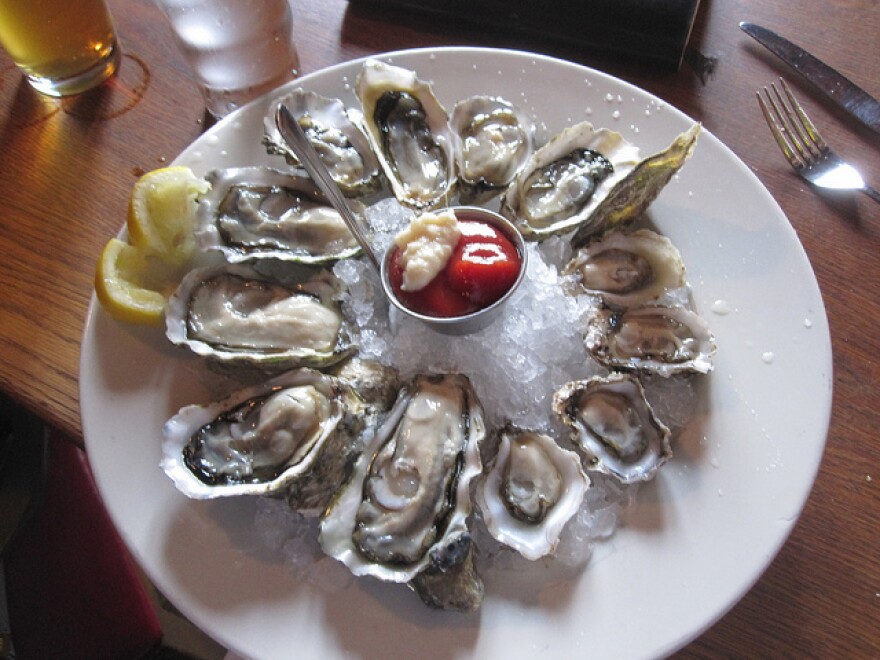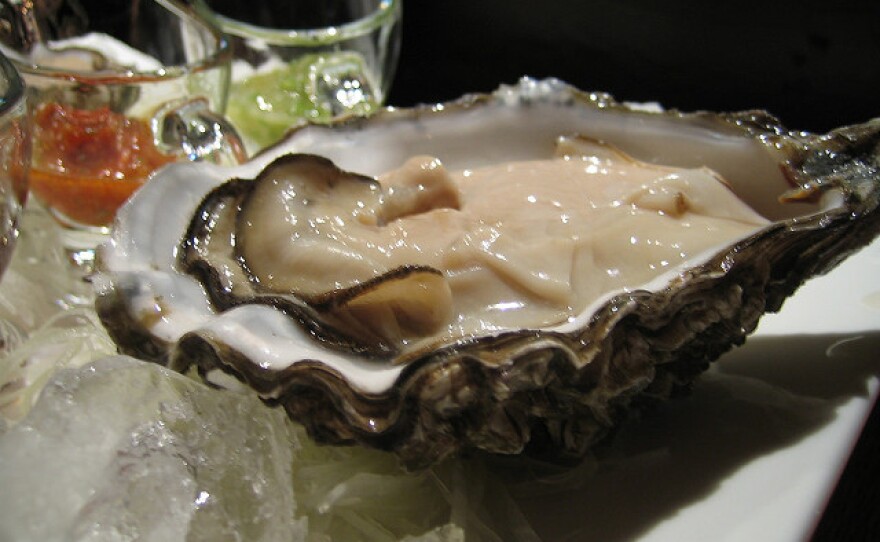Today we head up the road to the North Coast college town of Arcata and its annual celebration of both Kumamoto and Pacific oysters, mainstays of Humboldt Bay’s immensely successful aquaculture industry. It’s good to talk up top-notch local products. And it’s great to be able to boast about local water quality, which growing robust oysters implies. Oysters thrive—and can safely be farmed for human consumption—only in clean, healthy, protected waters. In California that means the northern reaches of Humboldt Bay, also known as Arcata Bay. Much of the south bay is unavailable for aquaculture, protected as the Humboldt Bay National Wildlife Preserve, home to hundreds of local and migrant bird species and other wildlife—a destination also well worth your time.

Back to oysters, which have been valued as food ever since people got hungry. Like other foods now served on white tablecloths—lobsters, for example, and sushi—oysters were originally peasant fare. Throughout the 1800s, New York oyster beds were the world’s dominant source, a prod to the city’s early restaurant trade, working-class oyster saloons. But oyster stocks soon declined, steeply, due to increasing urban populations, introduced diseases, and water pollution. The rarity of healthy, wild populations transformed oysters into an expensive delicacy worldwide.
Once the rich got into the act, these humble bivalves became important food indeed. Even food for the love gods. It’s possible that oysters were first purported to be an aphrodisiac because they vaguely resemble female genitalia. (The Victorians probably didn’t know that oysters start out as male and later, thinking better of it, become female—sex facts that serve only to confuse the immediate conversation.) Oysters do provide serious protein. They are also high in Omega 3 fatty acids; amino acids that boost sex hormones; and zinc, which supports testosterone production. You’d have to eat lots of oysters to make a big difference—but if that’s the goal, then the annual Arcata Bay Oyster Festival is the Father’s Day weekend party for you.
Please note that the Monterey Bay Aquarium’s Seafood Watch guidelines list Humboldt-grown oyster species as “best-choice seafood” selections because, among other things, they are raised naturally, with no feed or chemicals added to the water, and thus have a very low impact on the bay ecosystem and adjacent habitats. All oysters need is clean water, naturally available phytoplankton for food, tidal energy, and sunlight. And oysters help keep the bay’s water clean, by filtering it—up to 17 gallons per oyster per day. Given California’s very long coastline, it’s sad that Humboldt Bay is the only estuary in the state still free of diseases that killed shellfish populations elsewhere. But good for Humboldt, for doing it right.

Fully appreciating even eco-friendly oysters sometimes take practice. As that wag Johnathan Swift once put it, “He was a bold man that first ate an oyster.” Eating them when they’re truly fresh is one tip—they don’t get any fresher than those from Arcata—and some say they go down easier for beginners after a few beers. The Festival can help there too, given that local brews, wines, and hard ciders are as available as oysters—oysters served raw, grilled, barbecued, fried, swimming (so to speak) in butter and garlic, as oyster pizza or smoked oyster cannoli, even as oyster shooters—a drink quite popular in San Francisco during the gold rush.
The Arcata Bay Oyster Festival goes all day on Saturday, June 17, starting at 10 a.m. It’s a fundraiser for Arcata Main Street and technically free—expect to share the fun with some 13,000 others—but except for filling up on water at hydration stations, drinks and food aren’t free. Buy your drink tokens in advance, online, to avoid standing in line half the day. (Pick tokens up at will-call when you arrive.) Don’t miss the Oyster Calling Contest at noon, and the gleefully gluttonous Shuck-n-Swallow Contest, teamwork at its most, umm, slippery. But it’s not all foodie hedonism. There’s a family fun zone, two entertainment stages, farmers’ market, art market, and more.





